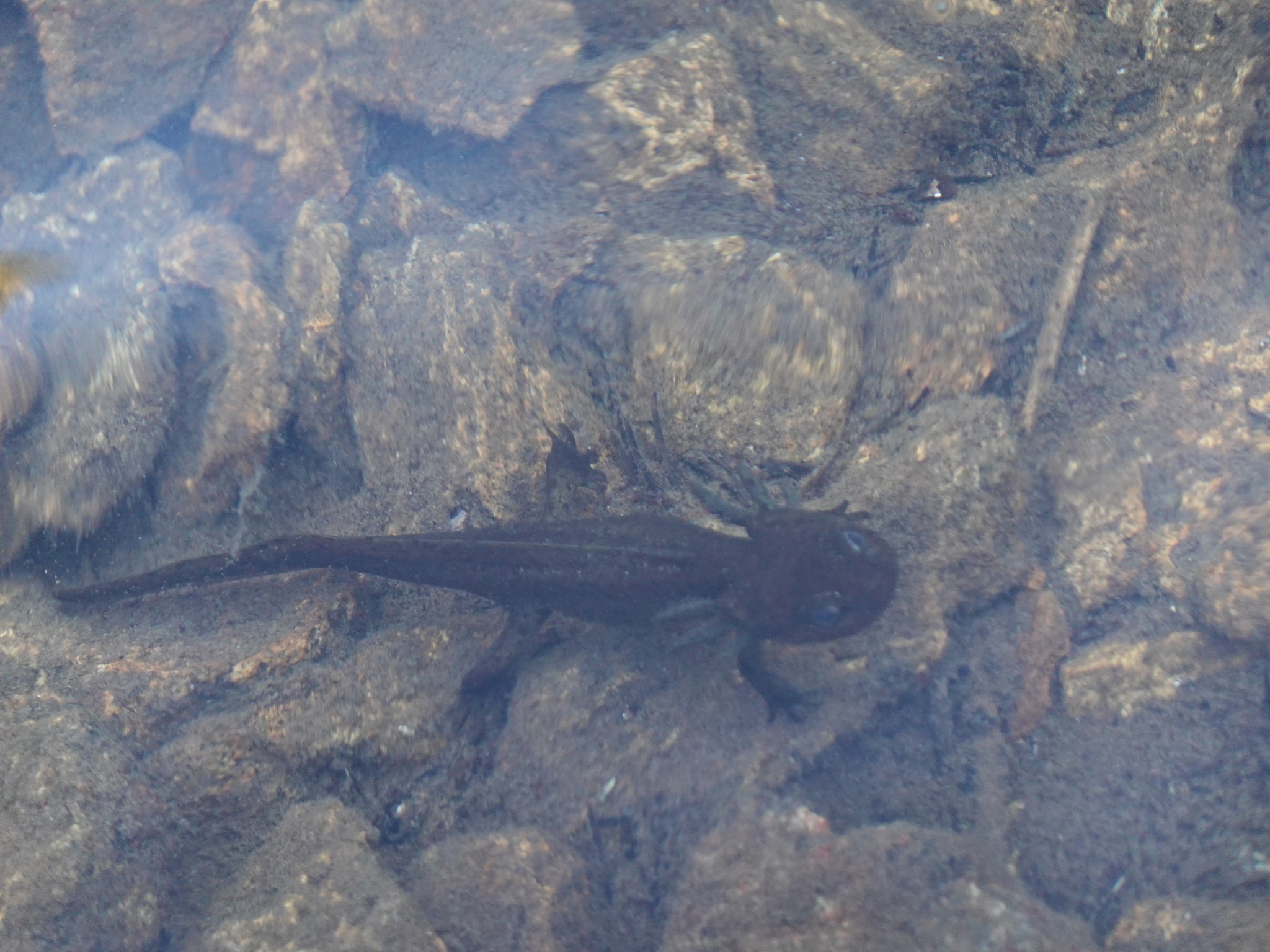Salamander
This may look like the character Toothless from the movie How To Train Your Dragon, but it's actually a salamander in its paedomorphic stage. I think probably a Northwestern Salamander, but am not entirely sure.
At least 9 species of salamander inhabit Mount Rainier National Park. Common to most of them, like other amphibians, is that adults lay eggs in water, which hatch into tadpoles with gills, which increase in size before metamorphosing into adults with lungs that live on land.
Unique to salamanders is the possibility of pedomorphosis, also known as neoteny, in which an individual retains juvenile features such as gills while becoming reproductively mature, without undergoing metamorphosis into the normal adult form. Most famously, the axolotl of Mexico reproduce entirely this way. Other salamander species selectively enable neoteny in response to harsh conditions where the adults could not survive on land, such as higher altitude.
Salamanders can regenerate lost limbs, tails, and even complex tissues such as the retina of the eye, within just a few weeks of an injury.
Salamander populations are decreasing due to deforestation, the introduction of predators, and pollution. Their larva are uniquely sensitive to contaminants such as soap, deodorant, sun lotion, and most of all picaridin bug spray, so it is important not to bathe in mountain lakes or streams after using any of these products. Before getting in, scoop some lake water into a bottle, walk 200 feet away from the lake so your contaminants don't just flow down into it, and give yourself a good scrub with cloth + water.
